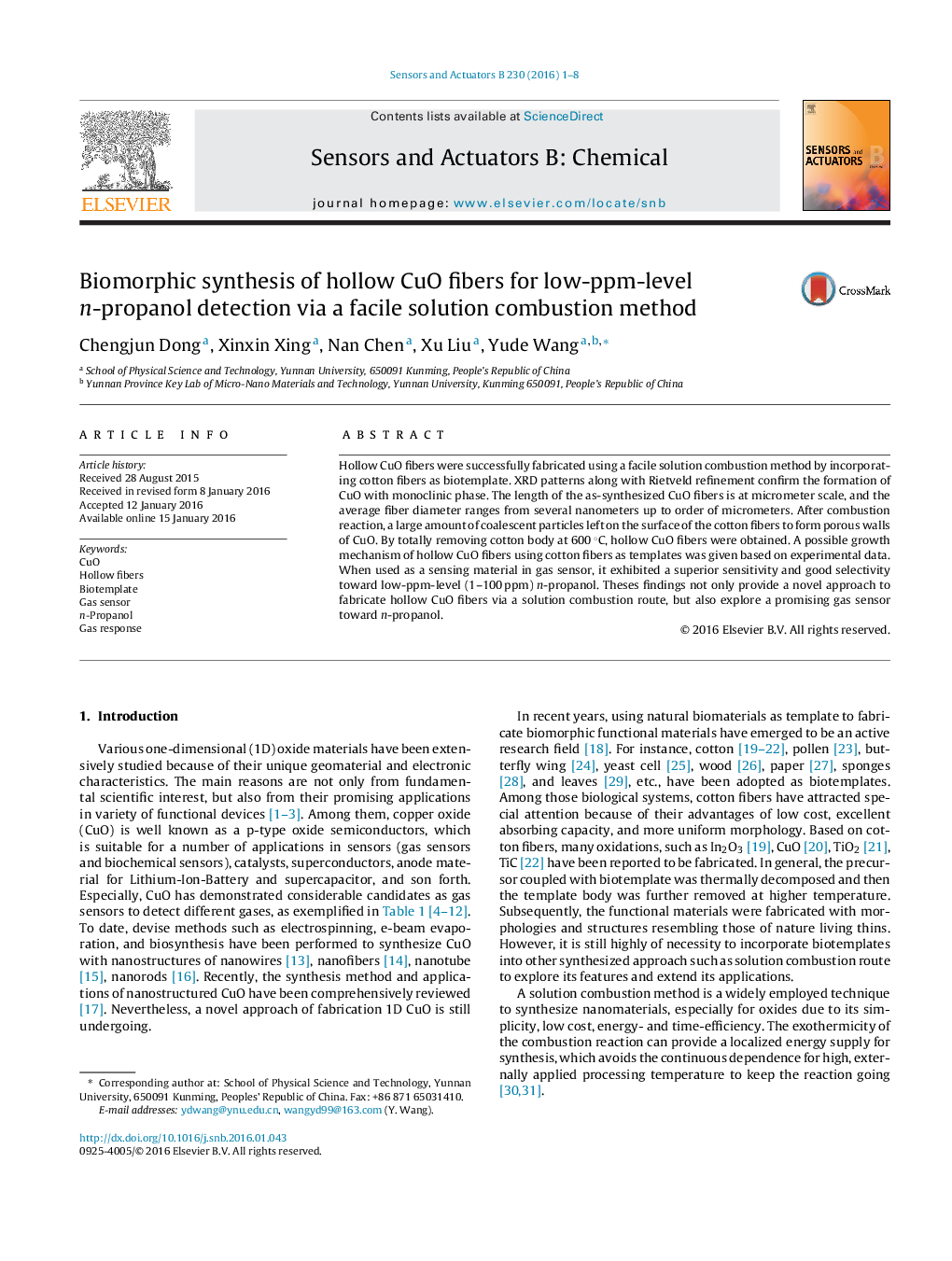| Article ID | Journal | Published Year | Pages | File Type |
|---|---|---|---|---|
| 741277 | Sensors and Actuators B: Chemical | 2016 | 8 Pages |
Hollow CuO fibers were successfully fabricated using a facile solution combustion method by incorporating cotton fibers as biotemplate. XRD patterns along with Rietveld refinement confirm the formation of CuO with monoclinic phase. The length of the as-synthesized CuO fibers is at micrometer scale, and the average fiber diameter ranges from several nanometers up to order of micrometers. After combustion reaction, a large amount of coalescent particles left on the surface of the cotton fibers to form porous walls of CuO. By totally removing cotton body at 600 °C, hollow CuO fibers were obtained. A possible growth mechanism of hollow CuO fibers using cotton fibers as templates was given based on experimental data. When used as a sensing material in gas sensor, it exhibited a superior sensitivity and good selectivity toward low-ppm-level (1–100 ppm) n-propanol. Theses findings not only provide a novel approach to fabricate hollow CuO fibers via a solution combustion route, but also explore a promising gas sensor toward n-propanol.
Graphical abstractFigure optionsDownload full-size imageDownload as PowerPoint slideThe hollow CuO fibers have been successfully fabricated using a facile solution combustion method by incorporating cotton fibers as biotemplate, which exhibits excellent gas-sensing properties toward low-ppm-level n-propanol.
